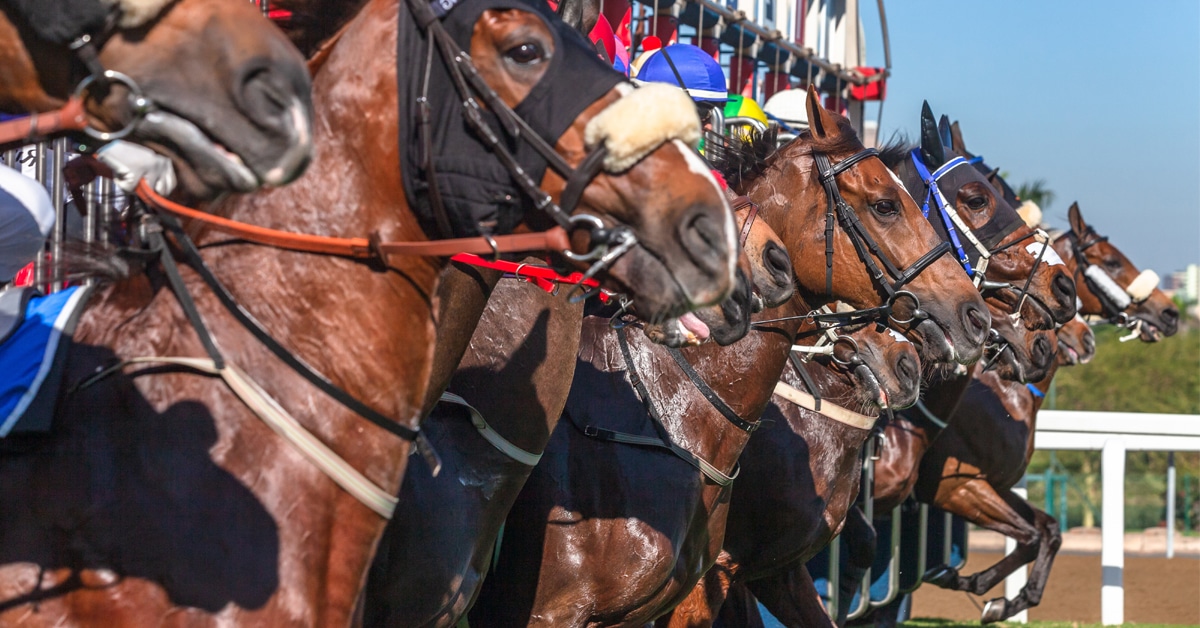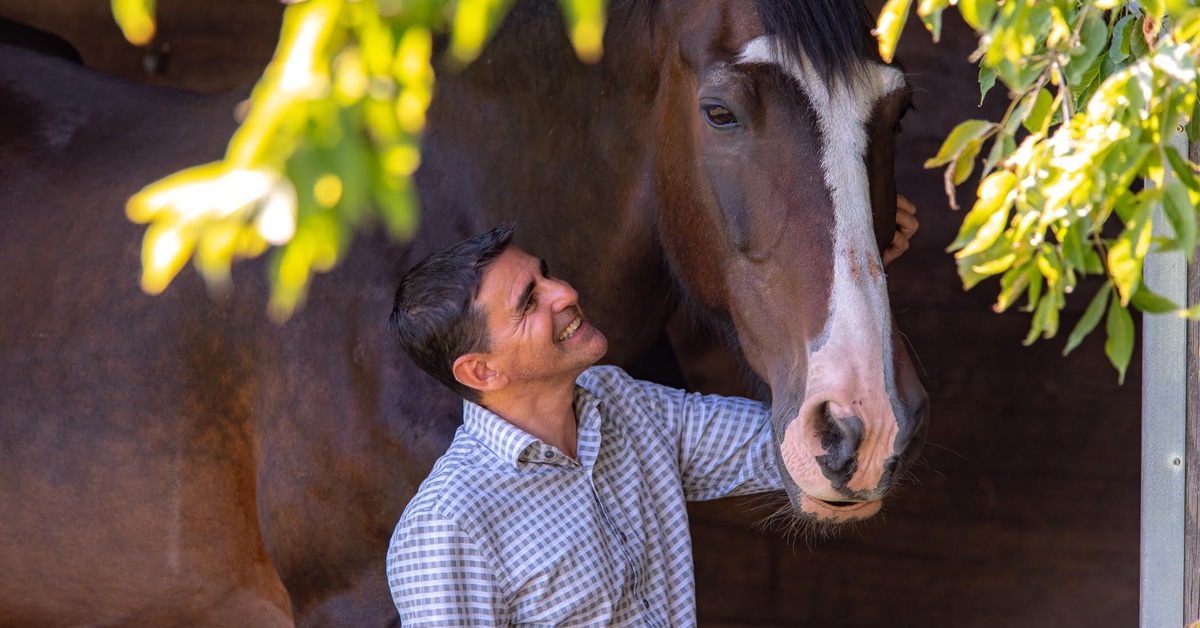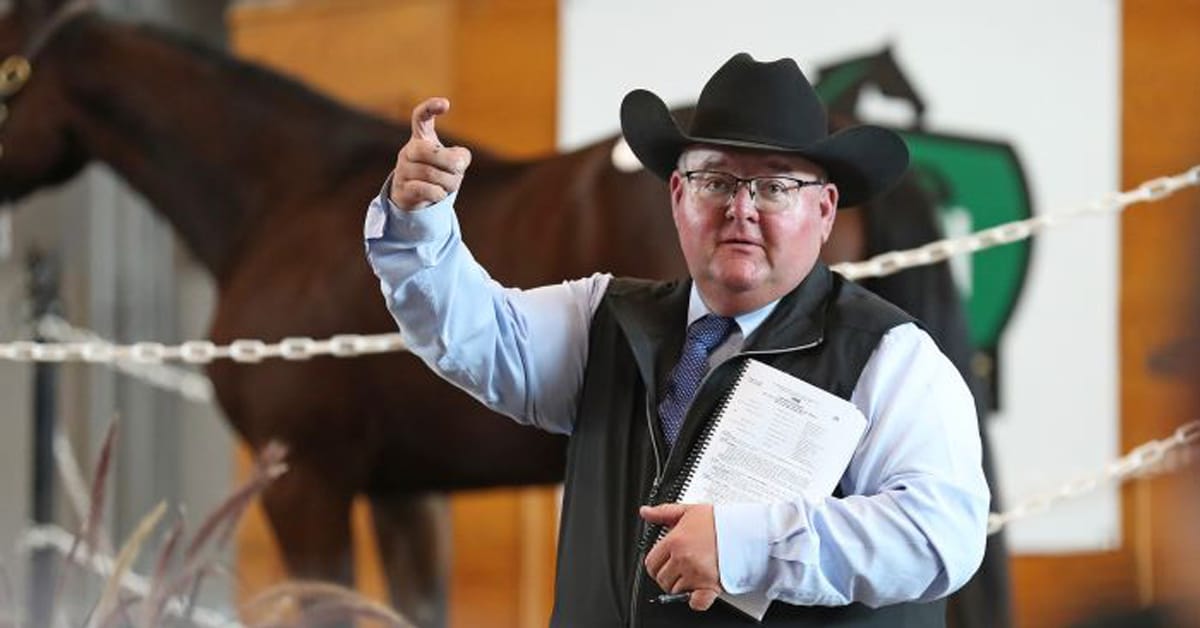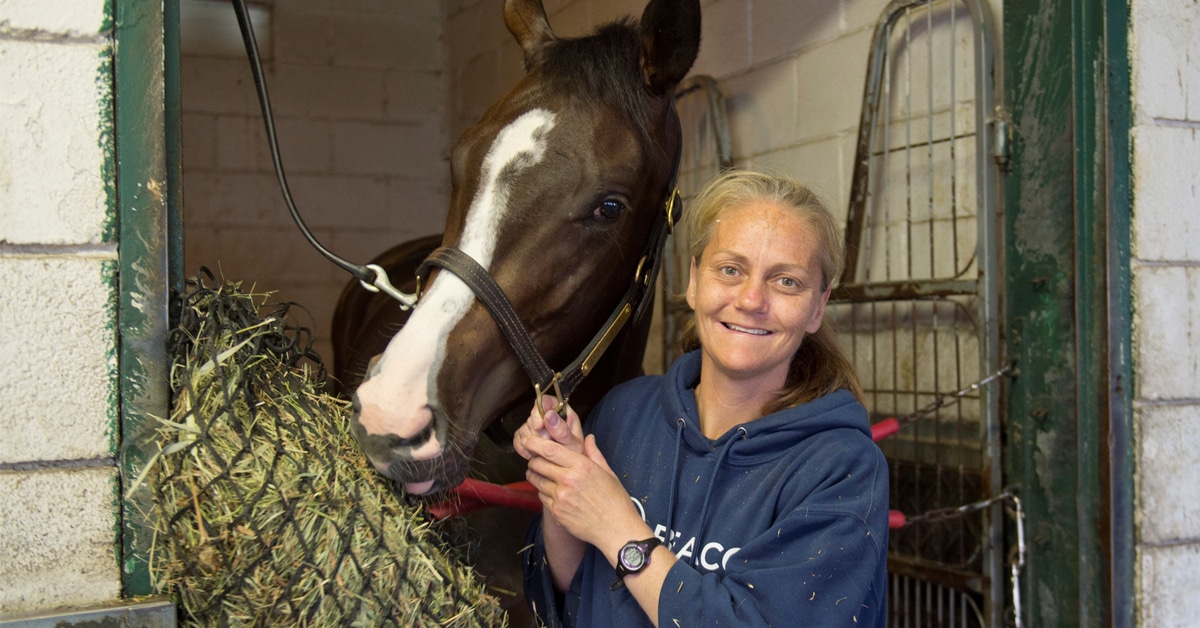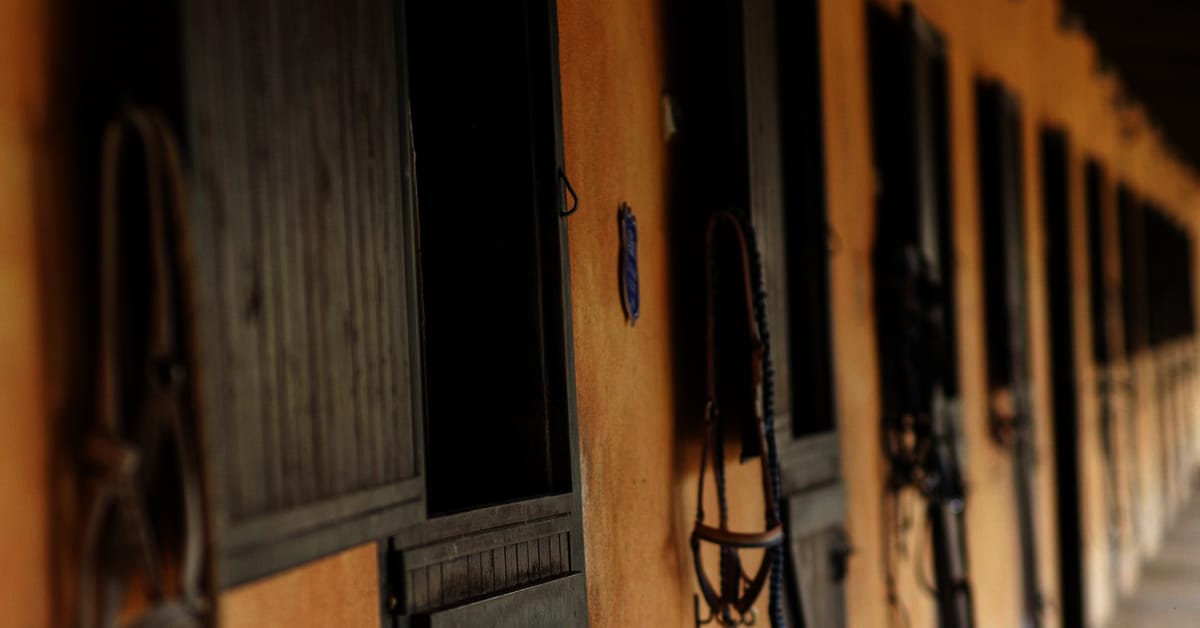When nutritionists discuss ‘energy’ we are referring to the calories required by the horse or those present in a feed.
A calorie is the amount of energy required to raise one gram of water by one degree centigrade (obviously a small amount!), and when we discuss equine energy needs we use megacalories (mcal). The digestible energy (DE ) requirements for a horse represent the amount of energy that is needed to be consumed by the animal in a day, and is calculated from the gross energy of the feed (the energy given off if combusted or burned) minus the fecal energy. Feeds are expressed as DE in mcal/kg or mcal/lb.
What gives him energy
Energy is required by the body to perform functions such as breathing, beating of the heart, pumping the blood, and of particular importance for the athlete, muscular activity. It is made available to the body through the metabolism of substrates such as carbohydrates (glucose and glycogen), fat and, to some degree, protein, which are ultimately derived from feeds. Glucose (in the bloodstream) or glycogen (the storage form of glucose in the muscle) can be metabolized quickly to energy, either in the presence (aerobic) or absence (anaerobic) of oxygen. When carbohydrates are metabolized without oxygen, the byproduct produced is lactic acid.
Fats are highly efficient sources, producing more energy per unit weight than carbohydrates, but fats can only produce energy via aerobic metabolism and it is relatively slow. Protein is energetically inefficient to use a fuel source, as the nitrogen compound associated with protein must be removed and excreted, which actually requires energy.
At all times, both aerobic and anaerobic metabolism are taking place, though the proportions of each will differ based on the needs of the body. At rest, or during low intensity exercise, oxygen is readily available and energy is not required as quickly, so fat (‘free fatty acids’ in the blood from adipose tissue or the diet, and muscle triglyceride) is the major fuel being broken down via aerobic metabolism. Research has shown that as the intensity of exercise increases, there is a shift towards a greater percentage of the energy being produced from carbohydrates, and less energy from fat. For example, if a horse is exercising intensely, such as during a two minute race, the majority of the energy will be derived from anaerobic metabolism of carbohydrates (mostly muscle glycogen, with some also coming from blood glucose).
Dietary Energy what’s in your feed?
From a dietary standpoint, carbohydrates are derived from simple sugars and starches, or from dietary fibre such as found in forages (hay, pasture). Starches and sugars (measured in feeds as non-structural carbohydrates or NSC) are prevalent in cereal grains (oats, corn, etc) and are easily digested and absorbed as glucose. Glucose entering the body triggers the release of the hormone insulin, which allows glucose to enter tissues such as muscle, and be converted to glycogen. When fibre is fermented in the large intestine of the horse (fibre is indigestible by mammalian enzymes), byproducts called volatile fatty acids (or short chain fatty acids) are produced and absorbed. These can be either converted to glucose, fat or can be usedimmediately for energy production.
Fibre is also extremely important from a digestive health standpoint, where if a horse is not fed enough fibre, they are more likely to colic. Fibre consumption results in less digestible energy than starches and sugars, because some energy is lost during the fermentation process. Fat is an excellent source of dietary energy, again because it produces more than two times the amount of energy per unit weight than carbohydrates. Therefore it is an excellent way to increase the energy density of the horse’s diet, without having to feed large amounts of concentrates, which may result in digestive upset.
Balancing fat and sugars
There has been much interest in the ideal proportion of fat and carbohydrate in equine diets, particularly in light of an increased risk of metabolic problems such as insulin resistance when horses are fed high starch and sugar diets. In addition, there is some evidence that when horses are adapted to diets higher in fat, they become more efficient at producing fuel from fat, thereby decreasing the dependence on carbohydrates. This is often termed a “glycogen sparing” effect. This also potentially reduces the amount of lactic produced during high intensity exercise (which is important for racehorses as one major reason for fatigue during a thoroughbred race is lactic acid buildup).
Thus, there is good reason why racehorse owners should feed higher amounts of fat in their horse’s diets. However, it should be noted that starch and sugar is still very important for racehorses. As mentioned, at all times there will be some carbohydrate and fat being burned for fuel. Even with a fat-adapted horse, the horse will still need significant sources of muscle glycogen and blood glucose to produce energy quickly enough for intense exercise.
Glycogen availability is critical for high intensity exercise, and experimental dietary manipulation resulting in decreased pre-exercise glycogen concentrations has negatively affected high intensity performance in research studies. Therefore, if a racehorse was fed a low NSC diet, they would have less glucose available to make glycogen, and therefore they might have less glycogen available for that rapid burst of energy they need. Further, a racehorse has little risk of developing insulin resistance thanks more to the benefits of exercise. Thus, unlike the trend for more sedentary horses where low NSC diets and high fat and fibre diets are popular, racehorses should be offered a diet high in both fat and NSC.
Feed time vs. race time
Of additional interest is the timing of feeding prior to a race. If a horse is fed concentrates too soon prior to a race, it can actually result in low blood glucose concentrations (due to insulin moving glucose from the blood to the muscle, coupled with exercise doingthe same thing).
One study showed that if horses were fed corn (high in starch)prior to racing, they actually had lower glucose concentrations during exercise than if a horse had been fasted. Therefore it is recommended to feed no sooner than four hours prior to an intense exercise bout. Offering forage has less of an effect on insulin and blood glucose concentrations, but there are concerns with the weight of forage in the digestive tract weighing the horse down (an ‘internal’ handicap) and is also therefore not recommended to feed too soon prior to exercise.
However, racehorses are prone to colic and ulcers, both of which can be prevented to some degree with access to lots of forage and it should therefore not be limited.
A racehorse requires about 30 mcal of energy per day (based on a body weight of 450kg, more than twice what a horse of the same weight at “maintenance” would require). Good quality forages can provide about 2mcal/kg, and the horse should receive at least 1% of their body weight as forage per day, and ideally closer to 1.5-2% (to help keep the digestive tract happy).
The remaining calorie requirements need to come from concentrates such as commercial feeds formulated for performance horses. These feeds typically range in energy from about 3.4 mcal/ kg to 4.2 mcal/kg, with those higher energy feeds often having supplemental fat in them (see Table 1).
Ideally one would look for a feed that has a relatively high amount of added fat (at least 8% fat) and a low amount of fibre (ideally no more than 10%), to ensure the amount of NSC is relatively high in addition to high digestible energy values (as fat increases and fibre decreases, digestible energy increases). The amount of concentrates required to meet a racehorse’s needs often results in a horse requiring upwards of 5kg of concentrate fed per day. To decrease the risk of colic, concentrates should be split into several meals per day. Work with an equine nutritionist and your veterinarian to develop a diet suited to meet your horse’s high-energy needs.
The Latest
